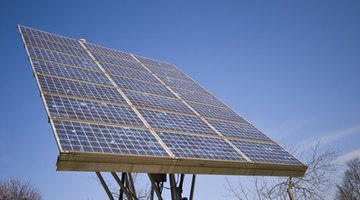How to Use Solar Power to Run Coffee Makers
Solar power is becoming a viable option for electricity consumption, reducing the overall amount of greenhouse gases that are pumped daily into earth's atmosphere. Making small changes, such as wiring your coffee maker to a solar power system, can add up to having a dramatic impact on your carbon footprint, as well as cutting down on your power bill.

-
Find out how many watts your coffee maker needs to run. Since heating up water to near boiling point needs a lot of electricity, many coffee makers average around 900 watts. Check on your specific model or find a coffee maker that needs less power to do the job. The number of watts will be used to determine the complexity and cost of your solar power system.
-
Install a solar power system using photo voltaic cells to capture the solar energy. Solar panels will need to run through a charge controller before the electricity reaches the deep-cycle batteries. The charge controller will help to keep the solar electricity from overloading the batteries.
-
Run the electrical wiring from the charge controller to the deep-cycle batteries. If you are only going to use the solar panels for your coffee maker, then you will probably only need one deep-cycle battery.
-
Connect the deep-cycle battery to an AC inverter, which will convert the direct current from the solar panels and the battery into the usable, alternating current is required by most household appliances.
-
Connect the AC inverter to an electrical outlet where your coffee maker is placed. Your coffee maker can then plug into the outlet, which will be powered by the solar panels on your rooftop.
References
Resources
Tips
- If you want to skip using the AC inverter, buy a coffee maker that runs on direct current. This can save time and money in setting up your system, but will add an additional cost for the direct current coffee maker.
- Hire an electrician to connect the solar power system to the outlet If you are unfamiliar with electrical systems. This will ensure that you meet all electrical codes and safety requirements.
Warnings
- Make sure all electrical power is off before working on your house's electricity. If you don't know what you're doing, ask for help from a professional.
Writer Bio
David McGuffin is a writer from Asheville, N.C. and began writing professionally in 2009. He has Bachelor of Arts degrees from the University of North Carolina, Asheville and Montreat College in history and music, and a Bachelor of Science in outdoor education. McGuffin is recognized as an Undergraduate Research Scholar for publishing original research on postmodern music theory and analysis.
Photo Credits
- Solar image by Thomas Leiss from Fotolia.com
More Articles



